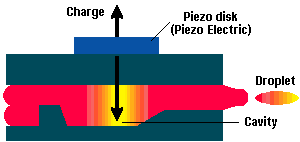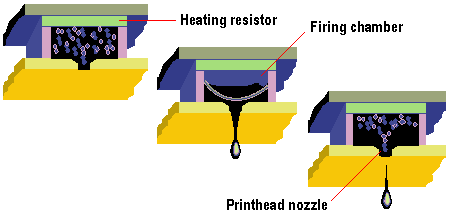In the late 1990s inkjets began to emerge capable of a print quality that enabled them to produce photographic quality output. In the early days many so-called photo inkjets were simply high-end inkjets, typically four-colour printers with one … [Read more...]
Inkjet Print Quality
The two main determinants of colour print quality are resolution, measured in dots per inch (dpi), and the number of levels or graduations that can be printed per dot. According to printing companies like MyCreativeShop, the higher the resolution and the more levels per dot, the better the overall … [Read more...]
Inkjet Color Management
The human eye can distinguish around a million colours, the precise number depending on the individual observer and viewing conditions. Colour devices create colours in different ways, resulting in different colour gamuts. Colour can be … [Read more...]
Creating Color
Creating colour accurately on paper has been one of the major areas of research in colour printing. Like monitors, printers closely position different amounts of key primary colours which, from a distance, merge to form any colour; this … [Read more...]
Inkjet Color Perception
Visible light falls between 380nm (violet) and 780nm (red) on the electromagnetic spectrum, sandwiched between ultraviolet and infrared. White light comprises approximately equal proportions of all the visible wavelengths, and when this shine … [Read more...]
Piezoelectric Printer Technology
Epson's proprietary inkjet technology uses a piezo crystal at the back of the ink reservoir. This is rather like a loudspeaker cone - it flexes when an electric current flows through it. So, whenever a dot is required, a current is applied to … [Read more...]
Inkjet Thermal Technology
Most inkjets use thermal technology, whereby heat is used to fire ink onto the paper. There are three main stages with this method. The squirt is initiated by heating the ink to create a bubble until the pressure forces it to burst and hit … [Read more...]
Inkjet Operation
Inkjet printing, like laser printing, is a non-impact method. Ink is emitted from nozzles as they pass over a variety of possible media, and the operation of an inkjet printer is easy to visualise: liquid ink in various colours being … [Read more...]
Inkjet Paper and Ink
The ink used in inkjet technology is water-based, which poses certain problems. The results from some of the early inkjet printers were prone to smudging and running, but since then there have been enormous improvements in ink chemistry. … [Read more...]

